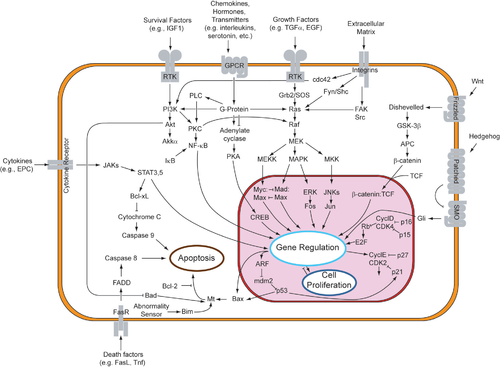 |
| Transmission electron micrograph of Hepatitis A virus. Credit: CDC/Betty Partin |
New research helps to shed light on how Hepatitis A virus damages the liver cells. Using a mouse model system (which is a feat in of itself as this virus was previously found to only infect primates), the researchers were able to identify the mechanism that causes the damage. The virus induces the apoptosis pathway in the liver cells (this is often referred to as programmed cell death) as a result on an innate immune system response to infection. Apoptosis is a complex signaling pathway that is a safety system to limit the spread of infections and prevent unregulated cell growth (cancer). Wikipedia has a detailed article on apoptosis.
 |
| An overview of signal transduction pathways for apoptosis. Credit: Wikipedia |
Using the newly developed mouse model, researchers have already begun to unlock of of the mysteries of Hepatitis A virus with many more to come. But more importantly, the researchers were able to identify why mice are not a normal host for the virus (their interferon response overcomes the ability of the virus to infect them). Hopefully, this work will lead to new therapies to combat this important human pathogen.